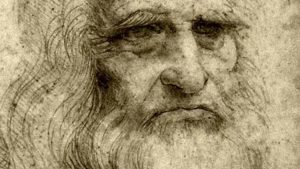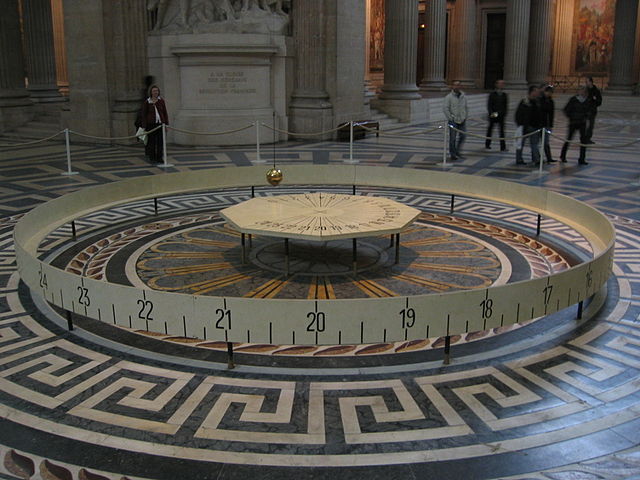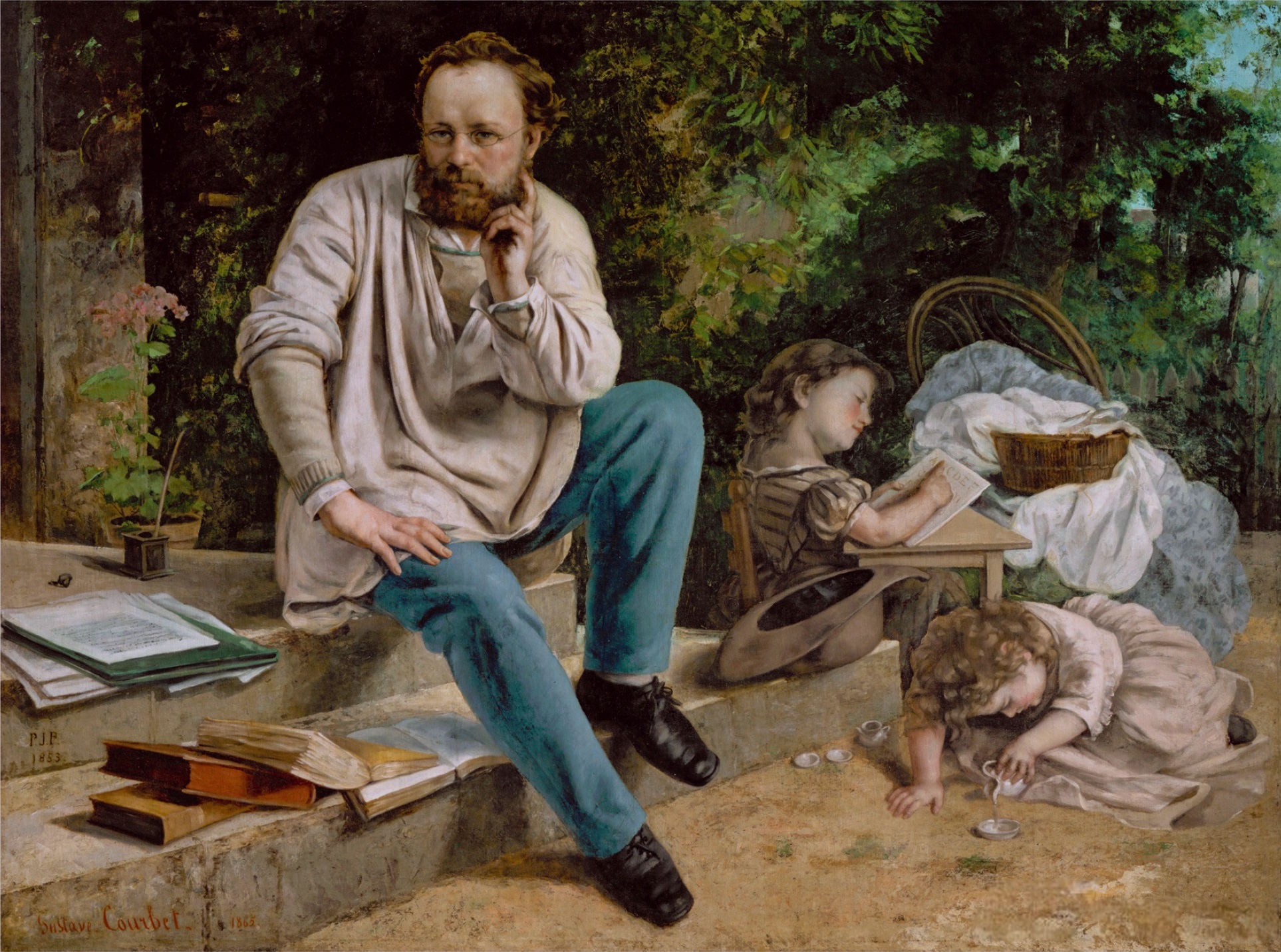The following article by internationally known theory scholar Gregg Lambert is the second of a two-part series. The first part was published on July 11, 2016 and can be found here.
Later, in the same argument, Foucault summarizes this analogy in a manner that will continue to inform the thesis that in the modern period politics becomes increasing made up of strategies and tactics that are derived from the technologies of war. Thus,
It may be that war as strategy is a continuation of politics. But it must not be forgotten that ‘politics’ has been conceived as a continuation, if not exactly and directly of war, at least of the military model as a fundamental means of preventing civil disorder. Politics, as a technique of internal peace and order, sought to implement the mechanism of the perfect army, of the disciplined mass, of the docile, useful troop, of the regiment in camp and in the field, on manoeuvres and on exercises. In the great eighteenth-century states, the army guaranteed civil peace no doubt because it was a real force, an ever-threatening sword, but also because it was a technique and a body of knowledge that could project their schema over the social body. If there is a politics-war series that passes through strategy, there is an army-politics series that passes through tactics. It is strategy that makes it possible to understand warfare as a way of conducting politics between states; it is tactics that makes it possible to understand the army as a principle for maintaining the absence of warfare in civil society. The classical age saw the birth of the great political and military strategy by which nations confronted each other’s economic and demographic forces; but it also saw the birth of meticulous military and political tactics by which the control of bodies and individual forces was exercised within states. The ‘militaire’ – the military institution, military science, the militaire himself, so different from what was formerly characterized by the term ‘homme de guerre’ – was specified, during this period, at the point of junction between war and the noise of battle on the one hand, and order and silence, subservient to peace, on the other. Historians of ideas usually attribute the dream of a perfect society to the philosophers and jurists of the eighteenth century; but there was also a military dream of society; its fundamental reference was not to the state of nature, but to the meticulously subordinated cogs of a machine, not to the primal social contract, but to permanent coercions, not to fundamental rights, but to indefinitely progressive forms of training, not to the general will but to automatic docility.1
It is here we find the convergence of two techniques that will later be employed to define the dual object of biopolitical order—strategy directed at the the population or in the war between populations; a tactic directed at the level of the individual body, or unit of measurement. Likewise this distinction between overall strategy of biopolitical calculation and knowledge and the concerete tactics and various techniques invented to shape and condition the body, determine the nexus of the two orderings or dispositions of general strategies of control and individual techniques, or the tactics of power.
Finally, in response to the question of Foucault’s resistance to a Marxist theory of the State, which will be important for understanding why Foucault does not follow Althusser’s concept of the apparatus, we first need to turn to Canguilhem’s discovery of this transformation from his 1952 article “Machine and organism,” which directly influenced Foucault’s understanding of the distinction between a dispositif and an apparatus.
For the purpose of defining these terms in Foucault’s usage, I will depend upon a very fine analysis given by Matteo Pasquinelli in which he traces the genealogy explicitly through Foucault’s inheritance of the term dispositif from the biology of Georges Canguilhem (who, as Pasquinelli shows, owes his usage in some respects from Goldstein, the 20th century neurologist). As Pasquinelli observes, in Canguilhem’s earlier article we have the first know usage of the term “dispositif ” to denote simply the idea of mechanism applied in modern biology.
According to this definition, Canguilhem writes: “With the exception of vertebrates, living beings and their forms rarely display to the scrupulous observer devices [dispositifs] that could evoke the idea of a mechanism, in the sense given to this term by scientists”.2
Moreover, the second definition that Canguilhem gives to the term is simply that of a tool that is invented or fabricated to act on nature, as described by modern ethnographers, but also he points out that the rationalization of techniques to explain the invention of specific tools (or machines) seems “to forget the irrational origin of machines themselves” (95). This will lead to a crucial point that I will return later on: it is the innate tendency to rationalize the idea of mechanism, as Descartes did, as a knowledge that is particular to the subject of Man and not a universal biological phenomenon that is already found to be latent in all organisms, which anthropomorphizes the natural relation between machine and organism in the form of a rupture or discontinuity that the form of rationalization of the idea of mechanism modern science first introduces.
In fact, as Canguilhem demonstrates many times in this brief article, it is the construction of machines that is actually chronologically and logically anterior to any technical knowledge that seeks to appropriate the machine (tool) in order to inform it certain specific ends, or to multiply its effects (including its powers over living beings), since “every technique essentially and positively includes a vital originality irreducible to rationalization.
Consequently, for Canguilhem, the image of vital originality might be better illustrated by the partly irrational origins of some of the machines invented by Leonardo Da Vinci, which Freud recounts in his psychoanalytic study, than by Descartes’ image of God as the watchmaker, where we find the idea of mechanism completely rationalized.
Canguilhem’s image of this originality echoes, intentionally perhaps,  Heidegger’s question concerning the origin of the work of art that appears in German two years beforehand. As I will argue concerning Foucault’s adaptation of Canguilhem’s earlier observation to his understanding of the techniques of power and sexuality, just as the construction of certain machines are before the knowledge of techniques that employ them, the invention of dispositifs is prior to knowledge of the effect or product, and in some ways can be compared to the function responsible for creation in the work of art, which cannot be be completely known beforehand, that is to say, rationalized as the principle of the creation.
Heidegger’s question concerning the origin of the work of art that appears in German two years beforehand. As I will argue concerning Foucault’s adaptation of Canguilhem’s earlier observation to his understanding of the techniques of power and sexuality, just as the construction of certain machines are before the knowledge of techniques that employ them, the invention of dispositifs is prior to knowledge of the effect or product, and in some ways can be compared to the function responsible for creation in the work of art, which cannot be be completely known beforehand, that is to say, rationalized as the principle of the creation.
A much simpler way of putting this is that the idea of mechanism is based on the construction of actual machines, and not the other way around; the knowledge employed in the construction of machines is not the same as the form of rationalization that is applied to this vital originality later on, whether this concerns the work of art or in technology. Therefore, “while it may be said that, in substituting mechanism for the organism, Descartes effaces teleology from life, but he does so only in appearance, for he reassembles it, in its entirety, as his point of departure” (86).
Another way of putting this is that Descartes inscribed the current idea mechanism within an already preexisting model of the living as the animal-machine (i.e., “he consciously rationalized the vital notion of life” in the principle of God). Here is perhaps Canguilhem’s greatest critique of the Cartesian dispositif–I use this term intentionally–that is contained in two parts. If God is both the efficient and final cause of the mechanism of life, then he already contains infinite knowledge concerning the evolutionary path of future mechanisms and one only needs to refer to this principle in rectifying the most current mechanistic understanding with the mind of God, who functions as its first principle.
In other words, Descartes first institutes the idea of mechanism in the living, in the same way that Marx institutes the updated idea of mechanism in the State, and finally, in the way that Althusser institutes the most current definition of mechanism in the theory of the Subject, which is to say a structure with a central subject. In some ways, this procedure functions no differently than updating the software of the Central subject according to the idea of its function to function categorically for all other elements.
But this leads to the most trenchant criticism, which reintroduces a fundamental distinction between technological machines and living machines, is that the former require efficient causes. Machines do not create other machines, but require a human agency to function as the efficient cause. This leads directly to Foucault’s adaptation of this insight to determine the history of dispositif as something that is artificial, requiring constant reinvention, adaptation, correction, new techniques and tactics, but it is also vulnerable to sudden reversals, appropriation, counter-strategy by social relations.
Thus, like the process that defines living itself through the encounter with the environment in a agnostic struggle, the evolutionary path of any dispositif is open to the moments of rupture and discontinuity, at least , with the constant and sudden appearance of new elements and techniques as part of a generalized struggle to maintain consistency and unity. Thus, the epistemology of mechanism is never given once and for all, and the concept of the dispositif is thus not established on neither a given understanding of techne, nor upon the most recent image of technology.
According to Pasquinelli, this distinction functions in a “pivotal” manner in Foucault’s analysis of disciplinary organization from this point onward, and evinces the influence of Canguilhem’s usage of the dispositif too address the function in biology and sociology of the norm, which does not take on a mechanistic determination, but rather a biological one, that of the organism.
Consequently, here we also see the precise point of the emergence and separation between juridical mechanisms and biopolitical dispositions in Foucault’s analysis of how power is organized no longer by an apparatus or infrastructure of relations with one central and controlling mechanism (the state), but rather in a kind of multiple array of techniques and dispositifs.
As Pasquinelli observes, according to this technical distinction, which Foucault employs also as a lever to pry away the understanding of power from its overtly mechaniistic, political materialist, and even structuralist determination, the concept of dispositif becomes not just a positive and heterogeneous agency of the law or the sovereign Subject, but functions as a normative autonomous agent.
 Moreover, it is here that biological normalization is substituted form mechanical causality in order to describe how power functions through the norm and the process of normalization as Canguilhem described in terms of the conflict of the organism and its environment and the function of anomaly and norm as two powers that define this relation as one of constant conflict. For example, through illness the organism is attempting to invent a new norm that will be able maintain its integrity and restore balance in its relation to its environment—both interior and exterior. By the way, this principle of norm bears a strong resemblance to Freud’s definition of the pleasure principle, whose goal is homeostasis.
Moreover, it is here that biological normalization is substituted form mechanical causality in order to describe how power functions through the norm and the process of normalization as Canguilhem described in terms of the conflict of the organism and its environment and the function of anomaly and norm as two powers that define this relation as one of constant conflict. For example, through illness the organism is attempting to invent a new norm that will be able maintain its integrity and restore balance in its relation to its environment—both interior and exterior. By the way, this principle of norm bears a strong resemblance to Freud’s definition of the pleasure principle, whose goal is homeostasis.
At the same time, we should be cautious in merely substituting one metaphor or analogy for another, a biological one for a mechanical one, or even in producing an ontological version of one metaphor merely supplanting the other. Here we can see why there have been so many misreadings of Foucault around the term “biopower,” since these readings have too often assumed that power no longer functions or occurs through its disciplinary mechanism (for example, the panoptic mechanism), and has been replaced wholesale by a powerful new paradigm that simply operates according to another analogy, the organism, and by means of a different kind of energy, biological energy or bios.
Here, let us return to the earlier statement quoted above, which I take on Pasquinelli’s word marks the first instance where Foucault introduces this pivotal distinction. What does he say exactly? He says that this year, instead of the mechanics of the disciplinary apparatus, I will be looking at the “effects of normalization,” which are defined as the effective function of various dispositifs. This does not imply that organism replaces mechanism, that biopower replaces discipline, but that both co-exist in a total social organization and operate according to different principles that both separates them and, at the same time, them in a “typical form of governmentality.”
In other words, dispostifs are simply “the other side of juridical and political structures of representation and is the condition of their functioning and effectiveness” If the technique of subjection functions more effectively as a form of subjectification, by which concrete individuals are thereby transformed into subjects, the dispositif becomes typical, ordinary, common, and almost universal as a power that everyone in the social field possesses and is determined by. It is here again we see Foucault’s favorite pair of conceptual terms for the conditions of emergence of particular dispositifs— dispersion and generality.
1 Michel Foucault, Discipline and Punish: The Birth of the Prison (New York: Knopf Doubleday, 2012), 168.
2 George Canguilhem, Knowledge of Life (New York: Fordham University Press, 2009), 76.
__________________________________________________
Gregg Lambert is Dean’s Professor, Humanities and Founding Director of the Syracuse University Humanities Center in Central New York. After completing his Ph.D, under the direction of late French philosopher Jacques Derrida, Professor Lambert joined the Department of English at Syracuse University in 1996, and was later appointed to Full Professor and Chair of English in 2005. In 2008, he was appointed as the Founding Director of the Humanities Center, where he currently holds a distinguished research appointment as Dean’s Professor of Humanities in the College of Arts and Sciences.
In addition to the Humanities Corridor, he has also directed several other major multi-institutional research and interdisciplinary initiatives, including the Society for the Study of Biopolitical Futures (with Cary Wolfe, Rice University), the Trans-Disciplinary Media Studio (with SU School of Architecture) and The Perpetual Peace Project, a multi-lateral curatorial initiative partnered with Slought Foundation (Philadelphia), the European Union National Institutes of Culture, the International Peace Institute, and the United Nations University, Utrecht University Centre for Humanities, and the Treaty of Utrecht Foundation (the Netherlands). In 2013, he was elected as a member of the International Advisory Board of the Consortium of Humanities Centers and Institutes.
Author of eleven books, critical editions, and more than a hundred articles in journals and critical editions, Professor Lambert is internationally renowned for his scholarly writings on critical theory, philosophy, the role of the Humanities in the contemporary university, and; especially for his work on the French philosophers Gilles Deleuze and Jacques Derrida. His latest book is Return Statements: The Return of Religion in Contemporary Philosophy (Edinburgh University Press, 2016).




